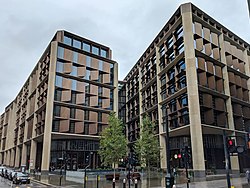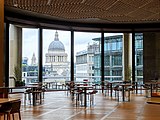
Mithraism, also known as the Mithraic mysteries or the Cult of Mithras, was a Roman mystery religion centered on the god Mithras. Although inspired by Iranian worship of the Zoroastrian divinity (yazata) Mithra, the Roman Mithras was linked to a new and distinctive imagery, and the level of continuity between Persian and Greco-Roman practice remains debatable. The mysteries were popular among the Imperial Roman army from the 1st to the 4th century CE.

Bank and Monument are two interlinked stations in the City of London that form a public transport complex served by five lines of the London Underground as well as the Docklands Light Railway (DLR).

The London Mithraeum, also known as the Temple of Mithras, Walbrook, is a Roman Mithraeum that was discovered in Walbrook, a street in the City of London, during a building's construction in 1954. The entire site was relocated to permit continued construction and this temple of the mystery god Mithras became perhaps the most famous 20th-century Roman discovery in London.
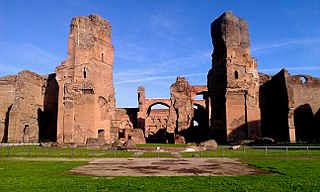
The Baths of Caracalla in Rome, Italy, were the city's second largest Roman public baths, or thermae, after the Baths of Diocletian. The baths were likely built between AD 212 and 216/217, during the reigns of emperors Septimius Severus and Caracalla. They were in operation until the 530s and then fell into disuse and ruin.

A Mithraeum(Latin pl. Mithraea), sometimes spelled Mithreum and Mithraion, is a Mithraic temple, erected in classical antiquity by the worshippers of Mithras. Most Mithraea can be dated between 100 BC and 300 AD, mostly in the Roman Empire.
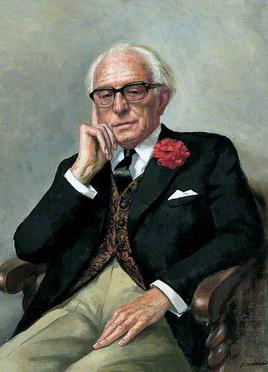
William Francis Grimes was a Welsh archaeologist. He devoted his career to the archaeology of London and the prehistory of Wales. He was appointed a CBE in 1955.

The Walbrook is a subterranean river in London. It gives its name to the Walbrook City ward and to a nearby street. It played an important role in the Roman settlement of Londinium.

Olafur Eliasson is an Icelandic–Danish artist known for sculptured and large-scaled installation art employing elemental materials such as light, water, and air temperature to enhance the viewer's experience.

Lithgow railway station is a heritage-listed former station master's residence and railway station located on the Main Western line at Railway Parade, Lithgow, City of Lithgow, New South Wales, Australia. It was designed and built by New South Wales Government Railways and built from 1924 to 1925. It is also known as Lithgow Railway Station Group and Residence and Eskbank East. The property was added to the New South Wales State Heritage Register on 30 August 2013. The station has frequent NSW TrainLink services running to and from Sydney Central.

ARoS is an art museum in Aarhus, Denmark. The museum was established in 1859 and is the oldest public art museum in Denmark outside Copenhagen. On 7 April 2004, ARoS opened with exhibitions in a brand new modern building, 10 stories tall with a total floor area of 20,700 m² and designed by Danish architects Schmidt Hammer Lassen. Today, ARoS is one of the largest art museums in Northern Europe with a total of 624.000 visitors in 2023.

Metrovacesa S.A. is a major Spanish property company, headquartered in Madrid, which was the largest publicly traded real estate developer in the Eurozone. The company is primarily focused on the leasing of a range of property in France and Spain, which comprises around 80% of its portfolio.

Carrawburgh is a settlement in Northumberland. In Roman times, it was the site of a 3+1⁄2-acre (1.5 ha) auxiliary fort on Hadrian's Wall called Brocolitia, Procolita, or Brocolita.
Rudchester Mithraeum is a Roman temple to the Roman god Mithras at Rudchester (Vindobala), an auxiliary fort on Hadrian's Wall, the northern frontier of Roman Britain. The temple was located 137m to the west of the castra. It is not currently visible to visitors to the site.
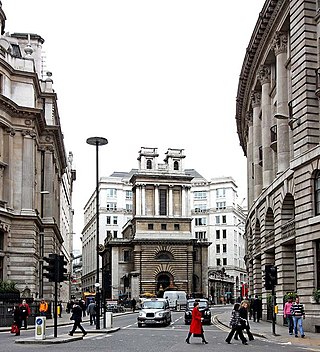
Lombard Street is a street notable for its connections with the City of London's merchant, banking and insurance industries, stretching back to medieval times.
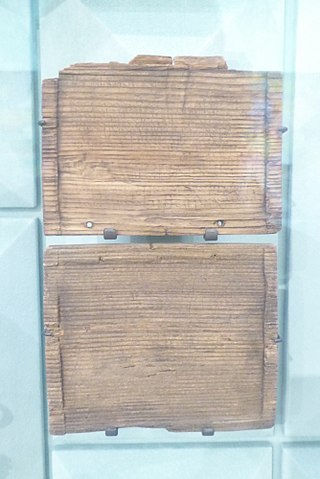
The Bloomberg tablets are a collection of 405 preserved wooden tablets that were found at the site of the Bloomberg building in the financial district of London. Excavations of the site took place between 2010 and 2013, after which the current Bloomberg building was constructed on the site of the archaeological dig.

Zerzevan Castle, also known as Samachi Castle, is a ruined Eastern Roman castle, a former important military base, in Diyarbakır Province, southeastern Turkey. Archaeological excavations at the site revealed the existence of underground structures, among them a temple of Mithraism, a mystery religion. The castle was used as a civilian settlement between the 1890s and the 1960s. The site is partly open to tourism.

The Jajce Mithraeum, or Jajački Mithraeum is a temple (Mithraeum) dedicated to the Persian invisible sun god, Mithra. It was rediscovered in an archaeological dig in 1931 in Jajce, Bosnia and Herzegovina.
The Tienen Mithraeum is a Mithraic temple constructed in the Belgian municipality of Tienen in the third century CE.

The Mithraeum of Dura Europos was found during excavations in the city in 1934. It is considered to be one of the best-preserved and best-documented cult buildings of Mithraism.
Studio Other Spaces (SOS) was founded by artist Olafur Eliasson and architect Sebastian Behmann in Berlin in 2014. The studio works on interdisciplinary and experimental building projects and artworks for public space. Eliasson and Behmann's partnership offers a platform for art and architecture to intersect and enrich each other.
